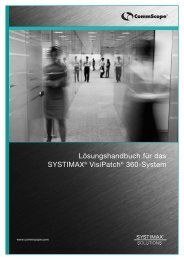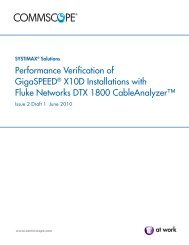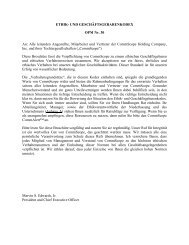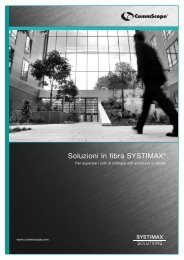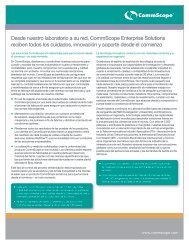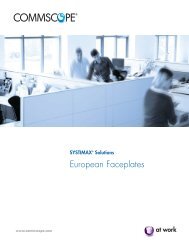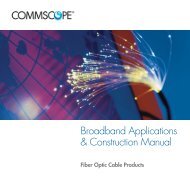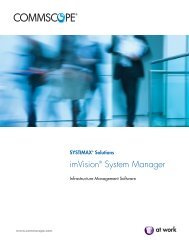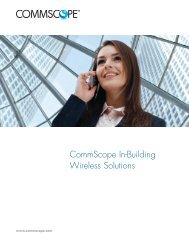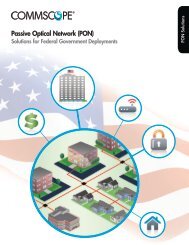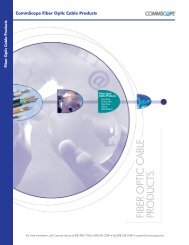Broadband Applications & Construction Manual - Public - CommScope
Broadband Applications & Construction Manual - Public - CommScope
Broadband Applications & Construction Manual - Public - CommScope
You also want an ePaper? Increase the reach of your titles
YUMPU automatically turns print PDFs into web optimized ePapers that Google loves.
Coaxial Drop Cable<br />
The three types of cable used to carry broadband services to and within business and residences are coaxial, fiber<br />
optic and unshielded twisted pair (UTP). Coaxial (or coax) cable is the most common; it is the ‘cable’ in the term<br />
‘cable TV.’ The vast majority of broadband networks are constructed using some type of coaxial cable. Coax is<br />
made up of these basic components:<br />
The center conductor carries a low-voltage RF or electronic digital signal and may also carry up to 150 volts<br />
of power (see Safety Standards, Section 13.3). For optimum strength and performance, <strong>CommScope</strong> uses copperclad<br />
steel for our coax - other types (solid copper, silver coated copper clad steel) are available;<br />
The dielectric is a polymer insulation that supports the conductor. <strong>CommScope</strong> enhances the performance of its<br />
coax by using foamed (or cellular) dielectrics that offer lower loss;<br />
The shield defends the signal from RF interference. <strong>CommScope</strong><br />
uses a foil/aluminum wire braid combination for long-term protection<br />
and performance; our highest performance QR ®<br />
320 cables use<br />
a welded and bonded .013 in (0.3 mm) thick strip of aluminum as<br />
a shield. Shielding corrosion can be prevented with <strong>CommScope</strong>’s<br />
BrightWire ®<br />
treatment, and a braid shield impregnated with Migra-<br />
Heal ®<br />
flooding compound will resist moisture migration;<br />
The jacket protects the entire assembly. Jacketing materials will vary<br />
depending on the application - tough polyethylene (PE) is used for buried<br />
installations; lower smoke-and-flame producing polyvinyl chloride<br />
(PVC) is used aerially and indoors, as are plenum-rated fluorinated<br />
ethylene propylene (FEP) and polyvinylidene fluoride (PVDF).<br />
For aerial installations, a messenger wire is built into the cable for<br />
support. <strong>CommScope</strong> also offers Multi-Reach ®<br />
cables that add up to<br />
six voice-grade UTPs for discrete phone service or powering.<br />
Cable Descriptions 2.1<br />
Coaxial Cable Description<br />
copper-covered<br />
steel conductor<br />
foamed dielectric<br />
foil/braid shield<br />
combination<br />
messenger wire<br />
jacket



